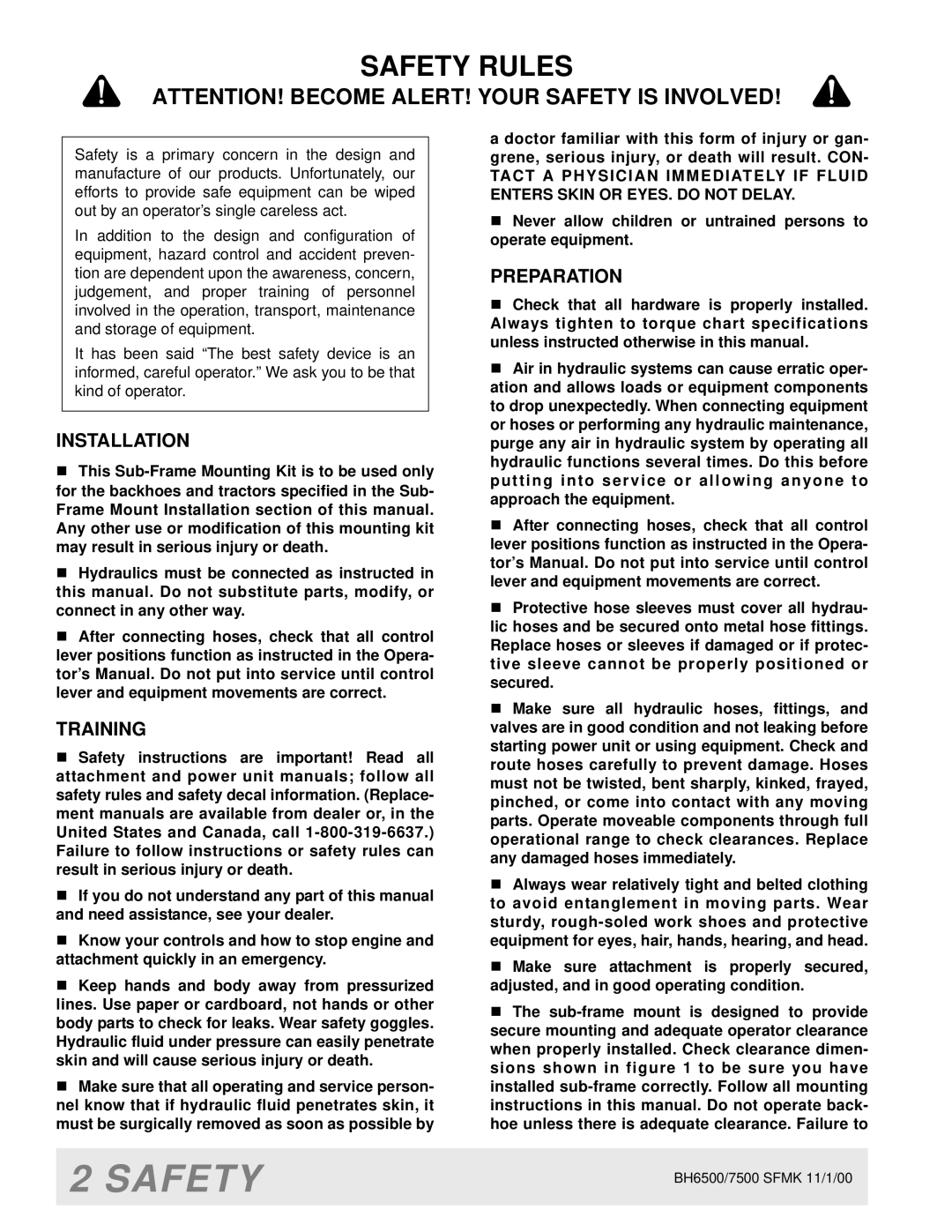BH6500 specifications
The Woods Equipment BH6500 is a robust and versatile hydraulic backhoe designed for a variety of construction and landscaping tasks. Renowned for its durability and performance, the BH6500 offers a blend of efficiency and flexibility, making it an excellent choice for contractors, landscapers, and homeowners alike.One of the standout features of the Woods BH6500 is its impressive digging depth. With a maximum digging depth of approximately 7 feet, the backhoe is designed to tackle deep excavations, trenching, and utility installations. The ability to gain access to deeper areas enhances its functionality for both commercial and residential projects.
Powering the BH6500 is a series of advanced hydraulic technologies that ensure smooth and precise operation. The hydraulic system provides exceptional breakout force, enabling users to lift and move heavy materials with ease. This capability is essential for digging, lifting, and backfilling applications, allowing operators to complete tasks quickly and efficiently.
The BH6500 is equipped with a variety of bucket options, including standard buckets, ditching buckets, and specialized attachments. This versatility allows users to customize the backhoe based on their specific needs, whether it’s digging, lifting, or grading. The easy change-out of attachments further adds to its convenience, minimizing downtime during projects.
In terms of compatibility, the Woods BH6500 is designed to be used with a wide range of tractors, significantly enhancing its usability. This feature allows users to maximize the investment in their existing equipment while expanding their operational capabilities.
Comfort and safety are also prioritized in the design of the BH6500. The ergonomic control layout and operator-friendly features improve ease of use, allowing operators to focus on their tasks without unnecessary strain. Safety mechanisms are integrated to protect users during operation, ensuring peace of mind while working on demanding jobs.
Overall, the Woods Equipment BH6500 is characterized by its strength, versatility, and advanced technology. Whether you are engaged in landscaping, construction, or agricultural work, this hydraulic backhoe provides the necessary power and functionality to complete tasks efficiently, making it a reliable partner for any project. With its array of features, the BH6500 stands out as a valuable asset in the world of machinery and equipment.

